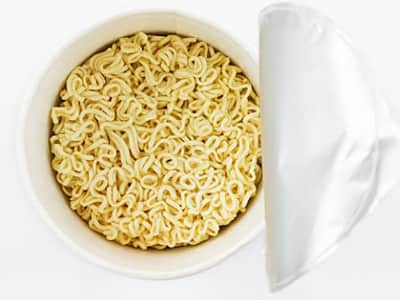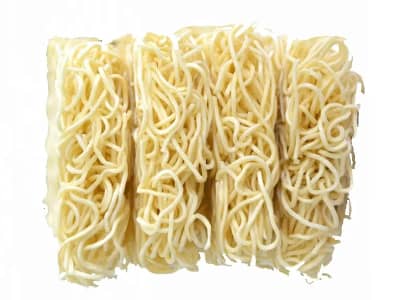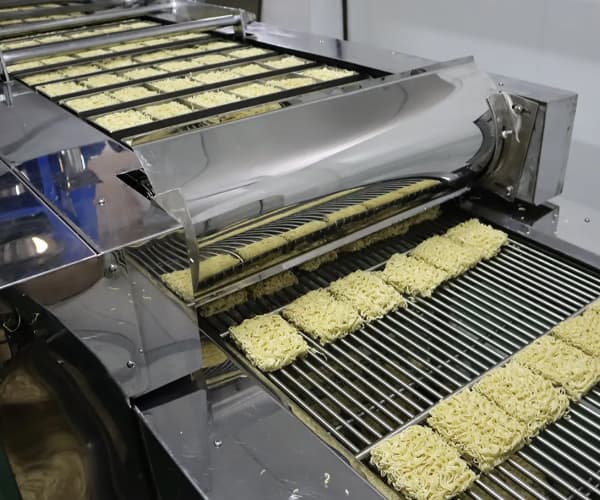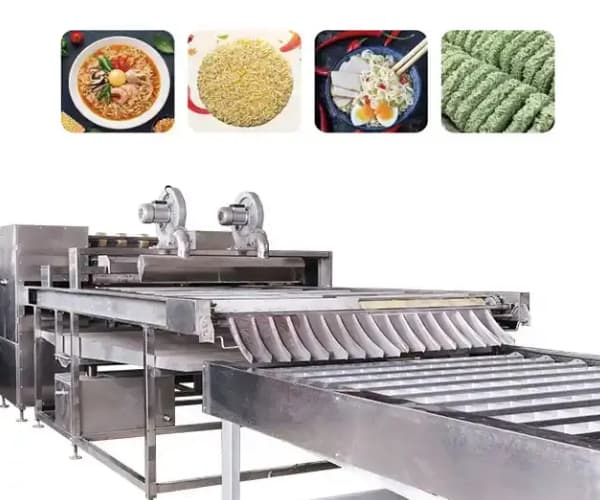Введение: Почему лапша мгновенной имеет значение
Мгновенная лапша - одна из самых знаковых и потребляемых продуктов питания в мире. Быстрый, недорогой, и удовлетворяет, Они подают в качестве основного блюда в Азии, Африка, Европа, и Америка. Будь то полуночная закуска студента или трапеза путешественника, Мгновенная лапша произвела революцию в глобальном потреблении продуктов питания.
Эта статья предлагает глубокое погружение в типы, Процесс производства, упаковка, питание, и эволюция Мгновенной лапши-от скромного начала в Японии до становления многомиллиардной промышленностью.

1. Происхождение и глобальный рост лапши мгновенного
1.1 Изобретение мгновенной лапши
Мгновенная лапша была изобретена в 1958 к Momofuku Ando, Основатель Nissin Foods в Японии. Его первый продукт, «Куриный рамен,” был жареным на масле торт с лапшой, заполненный приправой.
В 1971, Он запустил первый в мире чашка лапши, Изменение способа употребления лапши - требуя только горячей воды и несколько минут для приготовления.
1.2 Мгновенная лапша по всему миру
Мгновенная лапша быстро стала популярной по всему миру из -за их:
- Длинный срок годности
- Доступная стоимость
- Минимальное время подготовки
Сегодня, Глобальное потребление превышает 120 миллиарды порций в год, Согласно мировой ассоциации лапши с мгновенной лапшой (Другой).
2. Типы мгновенной лапши
2.1 Методом обработки
| Тип | Описание |
|---|---|
| Жареная мгновенная лапша | Во фритюре для обезвоживания и аромата; Хрустящая текстура |
| Не жареная мгновенная лапша | Высушены на воздухе или приготовленный на пару; нижний жир, более здоровая альтернатива |
| На пару готовой лапша | Влажная лапша, продаваемая в охлажденной форме; распространен в свежем рамене |
2.2 По формату упаковки
| Тип упаковки | Подробности |
|---|---|
| Бэк с лапшой | Традиционный формат, Требуется миска или горшок |
| Чашка/миска лапша | Поставляется в своем собственном контейнере, Просто добавьте горячую воду |
| Микроволновые лотки | Упакован для микроволнового отопления и потребления |
2.3 По вкусу и региону
| Область | Фирменные ароматы |
|---|---|
| Китай | Говяжий бульон, маринованные овощи, Пряная свинина |
| Япония | Тонкоцу, Я соус, Мисо рамен |
| Корея | Кимчи, Сырная огненная лапша, Армейское тушеное мясо |
| Юго -Восточная Азия | Том Юм, Лакша, креветка, кислый известь |
| Западные рынки | Сливочная курица, говядина тушеное мясо, бекон & сыр |

3. Процесс производства мгновенной лапши
3.1 Основные ингредиенты
- Пшеничная мука или рисовая мука
- Соль и щелочные агенты
- Вода
- Растительное масло (за жар)
- Добавки: Витамины, Улучшители вкуса, раскраски
3.2 Производственные этапы (Для жареной лапши)
- Тесто смешивание - ингредиенты превращаются в последовательное тесто
- Лист & Прокатывание - тесто раскатывается в тонкие листы
- Паряки - Приготовлено через пар, чтобы желатинизировать крахмал
- Резка & Размахивать - формируется в кудрявые пряди
- Жарить -обезвожен в результате жарки в пальмовом масле при ~ 160 ° C
- Охлаждение - воздушное охлаждение до комнатной температуры
- Подготовка пакета приправы - Специальный порошок, соус, овощи
- Упаковка - Автоматизированная герметизация в мешках, чашки, или миски
Бесплатная лапша пропустила стадию жарки и проходит расширенную сушку в туннелях с горячим воздухом.
4. Упаковка и срок годности
Упаковка играет критическую роль в безопасности мгновенной лапши, свежесть, и удобство потребителя.
4.1 Типы упаковки
| Тип | Преимущества |
|---|---|
| Пластиковая подушка | Недорогой, быстро производить |
| Бумажная чашка с крышкой фольги | Микроволновая безопасность, Удобный на ходу |
| Алюминиевая фольга | Более длительный срок годности, удержание аромата |
| Экопакат (Бумага/биоразлагаемая пленка) | Устойчивый, рыночный вариант |
4.2 Срок годности
- Жареная лапша: 6–12 месяцев
- Не жареная лапша: 3–6 месяцев
- Приправы с пакетами могут включать поглотители кислорода для долговечности

5. Соображения по питанию и здоровью
5.1 Питательный профиль
Типичная порция лапши с мгновенной лапшой содержит:
- Углеводы: 40–60g
- Жиры: 12–20G (в основном от жарки)
- Натрия: 800–1800 мг (часто высокий)
- Белок: 6–10G
5.2 Заблуждения здоровья
Миф: «Мгновенная лапша нездоровая».
Реальность: Модерация является ключевым. Многие современные продукты:
- Не жареный и низкий жир
- Укрепляется витаминами (Беременный, Д, железо)
- Сделано из цельной пшеницы, Лебеда, или овсяная мука
- Предлагается с вариантами с более низким содержанием наон или без MSG
5.3 Здоровые дополнения
Чтобы улучшить питание, добавлять:
- Вареные яйца
- Свежие или замороженные овощи
- Тофу, курица, или рыба
- Кимчи, морские водоросли, или семена кунжута
6. Тенденции рынка и потребительские предпочтения
6.1 Глобальный рынок
- Азиатско-Тихоокеанский регион является крупнейшей потребительской базой
- Африка и Южная Америка-самые быстрорастущие рынки
- Глобальные доходы, по оценкам, превышают доллар США 50 миллиард к 2030
6.2 Потребительские тенденции
- Чашка лапши набирают популярность среди городской молодежи
- Спрос на Веганские/безглютеновые варианты Растет
- Рост в Премиум рамен с настоящей начинкой
- Увеличение онлайн -коробки подписки с лапшой

7. Лучшие бренды с лапшой (2024)
| Классифицировать | Торговая марка | Страна |
|---|---|---|
| 1 | Ниссин | Япония |
| 2 | Мастер Конг | Китай |
| 3 | Самьян | Южная Корея |
| 4 | Нонгшим | Южная Корея |
| 5 | Индоми | Индонезия |
| 6 | Магги | Швейцария |
| 7 | Мама | Таиланд |
| 8 | А-напиток | Тайвань |
| 9 | Аккук | Вьетнам |
| 10 | Кукольная лапша | Гонконг |
8. Инновации в индустрии мгновенной лапши
- Ай-интегрированные упаковочные линии с обнаружением качества в реальном времени
- Технология лапши с низким содержанием масло и жареной воздуха
- Растительная лапша (горох, нут, Чечевичная мука)
- Съедобный экологический пакет (фильмы морских водорослей)
- Самостоятельно нагреть ящики с лапшой Для рынков на открытом воздухе
- 3D-Prindted Loodle Formes и персонализированные пакеты питания
9. Мгновенная лапша и культурное воздействие
- В Южная Корея, Мгновенная лапша - это культурная икона, часто в сочетании с кимчи и показан в K-драмах.
- Япония даже запустил «Космический рамен» для астронавтов на борту МКС.
- В Китай, Железнодорожные путешествия и мгновенная лапша неразделимы.
- Нигерия и Индия Полагаться на лапшу как дешевую ежедневную еду, Особенно для студентов и работников.
Заключение: Мгновенная лапша - больше, чем просто закуска
Мгновенная лапша - это блестящее слияние науки, удобство, и культура. Производится на крупномасштабном Промышленная линия производства или наслаждался в отдаленной горной хижине с термосом горячей воды, Мгновенная лапша остается актуальной, развивающийся, и любимый.
Их адаптируемость - в форме, вкус, и функция - делает их одним из самых устойчивых пищевых продуктов, когда -либо созданных.
